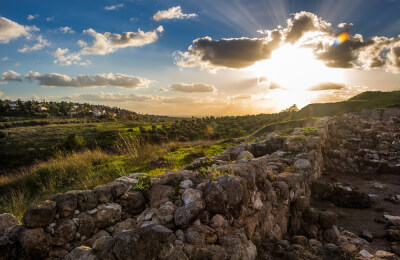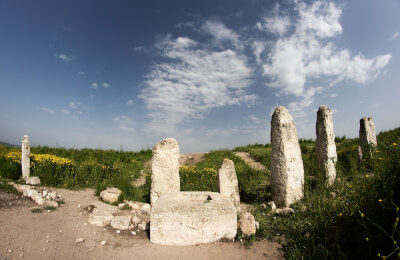 175₪
175₪
 175₪
175₪
We also found excursions from other cities that are close to your departure city
Other excursions that also deserve your attention
to Tel Lachish
Israel, a land steeped in history, tells countless stories through its archaeological sites and ancient landscapes. Among these is Tel Lachish, a site of significant historical and biblical importance. Once a major Canaanite city and later a fortified city in the Kingdom of Judah, Tel Lachish offers a fascinating glimpse into the ancient Near East's socio-political and military dynamics.
The Historical Significance of Tel Lachish
The ancient city of Lachish was strategically situated in the Shephelah region, controlling the main route from the Mediterranean coast to Jerusalem and the Hebron hills. Throughout its history, the city witnessed numerous battles and changes of power, serving as a tangible reminder of the ancient world's turbulent past. Its history is etched into the biblical narrative, most notably its conquest by the Assyrians under Sennacherib and later by the Babylonians, which signified pivotal moments in the history of the Kingdom of Judah.
Archaeological Discoveries at Tel Lachish
The archaeological expeditions at Tel Lachish have uncovered layers of history buried within its soil. These findings include the remains of a massive city gate, believed to be one of the gates mentioned in the Bible, which provided access to the city. Additionally, the ruins of an impressive palace and a well-constructed defensive wall that once withstood sieges provide insight into the architectural prowess of the ancient inhabitants.
The Siege of Lachish Relief
One of the most striking and informative finds associated with Lachish is the Siege of Lachish Relief, which is not located at the site itself but in the British Museum. This Assyrian royal palace relief vividly depicts the Assyrian siege of Lachish in 701 BCE and stands as a testament to the city's importance and the ferocity of its attackers.
The Lachish Letters
Another significant discovery from Tel Lachish is the Lachish Letters, a series of ostraca (inscribed pottery shards) written in ancient Hebrew script. These letters provide rare and valuable first-hand accounts of the military and social conditions in Judah during the final years before the Babylonian conquest, offering a human connection to the distant past.
The Excavation Process and Challenges
The excavation of Tel Lachish has been a long and arduous process, with challenges stemming from both the nature of the site and the region's political complexities. Despite these challenges, the work carried out by international teams of archaeologists has been instrumental in piecing together the history of ancient Israel and its neighbors.
Religious Significance of Tel Lachish
Tel Lachish holds a significant place in religious history, particularly within the Judeo-Christian tradition. The site's events are recorded in the Hebrew Bible, including the aforementioned sieges, providing a physical context to these narratives and offering an invaluable resource for biblical scholars and enthusiasts.
Visiting Tel Lachish Today
Today, visitors to Tel Lachish can walk through the ancient ruins and marvel at the scale of the city's fortifications. While much of the site requires imagination to reconstruct its former glory, there are interpretive signs and guides available to help bring the history of Lachish to life for tourists.
The Natural Surroundings and Biodiversity
Beyond its historical treasures, Tel Lachish is also known for its natural beauty. The site is surrounded by a landscape that has supported a rich biodiversity for millennia. The flora and fauna of the region have adapted to the Mediterranean climate, with its mild, wet winters and hot, dry summers.
Preservation Efforts at Tel Lachish
Preservation efforts at Tel Lachish are crucial in protecting this significant historical site for future generations. Conservation projects aim to stabilize the ancient ruins and prevent further erosion and damage caused by natural and human-induced factors.
Educational Opportunities and Research at Tel Lachish
Tel Lachish serves as an educational resource, offering a field school for students of archaeology and history. Researchers from around the world come to study the site's remains, contributing to our understanding of ancient Near Eastern civilizations.
The Impact of Tel Lachish on Israeli Culture and Identity
Sites like Tel Lachish play a vital role in shaping the cultural and national identity of Israel. They stand as a reminder of the region's ancient heritage and the persistence of its people through times of peace and conflict.
Conclusion: The Legacy of Tel Lachish
Tel Lachish offers an irreplaceable connection to the past, bridging millennia with its silent ruins. Its layers of ash and stone tell a story of human civilization, power struggles, and the enduring spirit of a city that stood at the crossroads of history. As an archaeological site, it continues to fascinate and educate, offering timeless lessons from the ancient world to all who venture through its gates. With each trowel of soil turned, the story of Tel Lachish is further unraveled, providing a deeper understanding of the complex tapestry that is the history of Israel and the ancient Near East.



